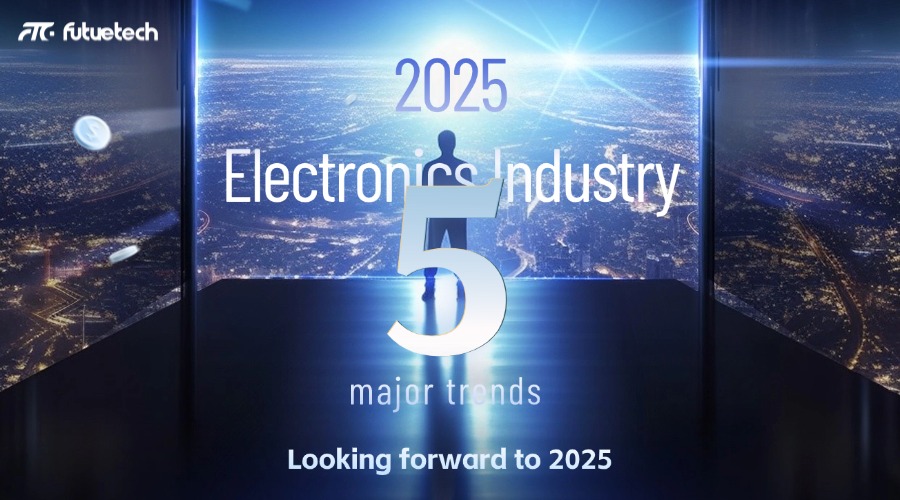With the continuous advancement of science and technology, various innovative technologies are shaping the future industrial landscape. The integration of multiple disciplines such as artificial intelligence, high-end manufacturing and new materials has not only promoted the upgrading of traditional industries, but also spawned a number of potential disruptive products. This article will explore five key trends, involving the development of humanoid robots, smart wearable devices, smartphones, automotive chips and digital simulation technology. These trends not only represent the forefront of technology, but also reveal market opportunities and challenges in the coming years.
Trend 1: Humanoid robots usher in new opportunities
Humanoid robots integrate multidisciplinary technologies such as AI, high-end manufacturing, and new materials, and are expected to become disruptive products after smartphones and new energy vehicles. The advancement of AI large models enables robots to better understand human instructions, provide complex dialogues and predictive services, while the maturity of the industrial chain and policy support further promote its development.
The field of humanoid robots in China has attracted large-scale capital investment. As of the end of 2024, a total of 49 financings have occurred, with a total amount of more than 5 billion yuan. The international market is also active, with Figure AI and Agility Robotics raising US$675 million and US$150 million respectively.
In China, manufacturing, especially automobile manufacturing, is regarded as the most promising commercialization area for humanoid robots, while the demand for home service applications is relatively lagging.
Trend 2: Smart wearable devices are popular again
The smart wearable device market is expected to reach a new high of 800 million units in global shipments in 2025. Health and fitness needs have driven the development of smart watches, health trackers and augmented reality devices, and the popularization of 5G and IoT technologies have made wearable devices more intelligent.
In particular, in the fields of children's smart watches and elderly health wearable devices, market demand has grown significantly. The former meets parents' concerns about their children's safety, and the latter provides health monitoring and emergency response services for the elderly. In addition, the integration of AI technology will enable devices to provide more accurate data analysis and personalized services.
Trend 3: Smartphones fully embrace generative AI
Generative AI is changing the ecological landscape of smartphones. Apple launched a series of generative AI features through iOS 18, and realized hybrid AI reasoning between cloud and local devices. This marks that the competition for mobile phone AP SoC has officially entered the era of generative AI.
In addition, chip manufacturers such as MediaTek have also strengthened AI function support in their new products, including end-side training and short video generation. It is expected that by 2025, the AI ecosystem of smartphones will gradually move from diversification to standardization.
Trend 4: 3nm automotive chips are gradually landing
In 2025, TSMC's 3nm process chips are expected to enter the automotive field. The application of 3nm chips will not only improve computing performance, but also promote the development of intelligent driving and in-vehicle entertainment systems.
MediaTek and other chip manufacturers have actively laid out this market. The popularity of 3nm process marks the leap of automotive chips from high-performance computing to more advanced processes, laying a technical foundation for the upgrade of future smart cars.
Trend 5: Digital simulation changes the industry
SpaceX has completely changed rocket development by using a lot of digital simulation in the design process, reducing costs and speeding up progress, making it a decade ahead of its competitors. Other industries such as aviation and pharmaceuticals still rely heavily on physical testing and rarely use simulation technology.
This shift provides huge opportunities for improving efficiency and reducing costs, especially in the semiconductor and technology fields. For EDA/IP providers, the low adoption rate of digitalization in traditional industries has brought huge opportunities for system-level design, which is consistent with the trend of increasing integration of chips and systems. Companies such as NVIDIA and Tesla have led this shift.
In summary, with the continuous innovation of science and technology and the continuous expansion of application scenarios, the above five trends will have a profound impact on the future development of all industries. From the rise of humanoid robots to the popularization of smart wearable devices, to the advancement of smartphones and automotive chips, these technological breakthroughs not only bring new business opportunities, but also promote profound changes in the global industrial structure. In the face of these changes, companies and investors need to maintain keen insight and seize opportunities to cope with the rapidly changing market environment.

